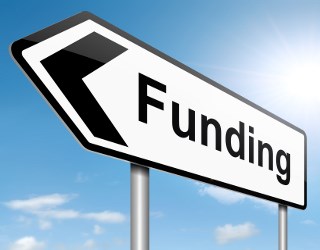
IC-074/21: International Consultant – Mid Term Evaluation
IC-074/21: International Consultant – Mid Term Evaluation has been closed on 27 Sep 2021. It no longer accepts any bids. For further information, you can contact the United Nations Development Programme
Bellow, you can find more information about this project:
Location: Iraq
General information
United Nations Development Programme
Consulting
Closed
Timeline
13 Sep 2021
27 Sep 2021
Not available
Contacts
Description
| IC-074/21: International Consultant – Mid Term Evaluation | ||||||||||||||||||||||||||||||||||||||||||||||||||||||||||||||||||||||||
|---|---|---|---|---|---|---|---|---|---|---|---|---|---|---|---|---|---|---|---|---|---|---|---|---|---|---|---|---|---|---|---|---|---|---|---|---|---|---|---|---|---|---|---|---|---|---|---|---|---|---|---|---|---|---|---|---|---|---|---|---|---|---|---|---|---|---|---|---|---|---|---|---|
| Procurement Process : | IC - Individual contractor | |||||||||||||||||||||||||||||||||||||||||||||||||||||||||||||||||||||||
| Office : | UNDP Country Office - IRAQ | |||||||||||||||||||||||||||||||||||||||||||||||||||||||||||||||||||||||
| Deadline : | 27-Sep-21 | |||||||||||||||||||||||||||||||||||||||||||||||||||||||||||||||||||||||
| Posted on : | 13-Sep-21 | |||||||||||||||||||||||||||||||||||||||||||||||||||||||||||||||||||||||
| Development Area : | CONSULTANTS | |||||||||||||||||||||||||||||||||||||||||||||||||||||||||||||||||||||||
| Reference Number : | 83193 | |||||||||||||||||||||||||||||||||||||||||||||||||||||||||||||||||||||||
|
Link to Atlas Project : 00089459 - Funding Facility for Stabilization | ||||||||||||||||||||||||||||||||||||||||||||||||||||||||||||||||||||||||
|
Documents :
Annex I - Terms of Reference Annex II - General Terms and Conditions Annex III - Letter of Interest and Financial Proposal Annex IV - P11 Form | ||||||||||||||||||||||||||||||||||||||||||||||||||||||||||||||||||||||||
| Overview : TERMS of REFERENCE (ToR) International Consultant – Mid Term Evaluation
1. Background
Iraq has been suffering decades of violence and armed conflict, which intensified from 2014 with the invasion of IS. On 9th Dec 2017, after government forces gained control of the remaining territory on the border with Syria, former Prime Minister al-Abadi announced the victory over IS. With this, a hopeful new chapter has started for Iraq. Post-IS, attention turns to (i) rebuilding of communities and stabilization of liberated areas and (ii) developing a sound basis for long-term sustainable economic and social development of the country. Successful restoration of territorial control by the Government of Iraq renewed the opportunity to build an inclusive and accountable political system that serves all communities, regions, and beliefs, preserves the country's diversity, and enhances its democratic order. Asserting such a political system is essential to rebuilding the trust between the people and their Government and to avoiding a return to divisive sectarianism and radicalization of youth. The institutional challenges are also manifested in the form of inefficient institutional performance due to a weak administrative system and low staff productivity, and financial and administrative corruption. The weak institutional capacity has, in turn, contributed to the inability to address the development constraints facing the country. Weak institutional performance is partly the result of the protracted conflict in Iraq. Among the underlying causes are endemic corruption, which siphons funds away from development and security priorities, and mismanagement of national assets and resources Iraqi and international efforts to stabilize liberated areas have achieved significant progress – with over 3.8 million Internally Displaced People (IDPs) having already returned to their areas of origin, mostly in a peaceful and orderly manner. Recent returns have been recorded mainly in the four governorates of Nineveh, Salah al-Din, Kirkuk, and Anbar. Nevertheless, much remains to be done to assist the remaining 2.05 million IDPs (of which 1.5 million are living outside camps) – as well as to support the return to the normal life of the millions of returnees and host populations. The IDP return process remains dynamic – with new and secondary displacements being recorded because of limitations in the shelter, basic services, education and healthcare services, and livelihoods opportunities as well as security concerns. The poor management of Iraq’s immense oil wealth – along with the need for public finance reforms, improved accountability, fiscal transparency, and effective anti-corruption measures – are among the key constraints facing the country. Competition over the control of resources has exacerbated ethnic and sectarian divisions, with an ensuing deterioration in governance, security and state legitimacy. Dominance of the public sector in the Iraqi economy has prevented the emergence of a vibrant private sector and the associated job creation necessary for enhancing the welfare of all Iraqis. Focus on state-owned enterprises discourages entrepreneurship, private sector development, and diversification – while the weakness of the private sector prevents it from being an engine of employment for youth.
The Support to Recovery and Stability through Local Development in Iraq project, also known as Local Area Development Programme III (LADP III), is a four-year project primarily funded by the European Union (EU) and jointly implemented in Iraq by UNDP and UN-Habitat with a combined budget of EUR 47,500,000. Overall, the LADP III project aims to assist the Government of Iraq (GoI) to restore the legitimacy of the country's institutions and to renew the social contract between citizens by strengthening of local governments' functions and services is key to unlocking the blockages of the current post-conflict scenario and to mitigating the political risks linked to the elections held on May 12, 2018 and the unmet citizen grievances that could contribute to destabilizing the country. Project activities focuses on enhancing local government systems by supporting decentralization processes; implementing selected local priority development projects already listed in the existing local development plans at provincial level and assisting returns and better living conditions in conflict/fragile areas, through the rehabilitation and upgrading of housing and community infrastructure and services.
The overall objective is to promote the stability and socio-economic development of Iraq. The specific expected outcomes and related outputs are as follows. SO-1: Selected Governorates are able to manage effectively and transparently local government systems and public services O.1.1: Decentralization of powers from central to local authorities – Law 21 O.1.2: Donor coordination mechanism established O.1.3: Optimized Governorates’ revenue generation systems piloted O.1.4: Strengthened dialogue between local authorities and civil society SO-2: Economic growth and job opportunities have increased in selected Governorates, with special focus on green projects involving youth and women O.2.1: Local development projects and priority actions implemented deriving from Provincial Development Plans (PDPs) and Sustainable Energy Action Plans (SEAPS). O.2.2: Mechanism aimed at mobilizing additional funding created SO-3: Living conditions in conflict areas have improved and returnees are assisted O.3.1: Damaged houses and public facilities rehabilitated in post-conflict areas, in line with the 2018 PRPs O.3.2: On-the-job vocational training delivered and jobs for youth created in line with greener and safer construction technologies. Overall, the LADP III project contributes to the following:
Full details of the LADP III project are available in the Project Document (PRODOC) accessible here: https://open.undp.org/projects/00116195
UNDP and UN-Habitat proposes to conduct a Mid-Term Evaluation (MTE) looking at its LADP III project since inception in January 2019 to June 2021. The purpose of this external MTE is to conduct an evidence-based and highly consultative reflection on the LADP III project to enhance project performance and learning going forward. The evaluation findings and recommendations are expected to inform and improve decision-making relating to project implementation during the remaining period. Geographically, the MTE of the LADP III project will assess actions in project intervention areas specifically in the nine Iraqi target Governorates of Anbar, Basra, Dohuk, Erbil, Missan, Ninewa, Salah al-Din, Sulaymaniyah and Thi Qar. Mid-Term Evaluation stakeholders include individuals and organizations from the public and private sectors, as well as civil society organizations, and development partners. The MTE consultant will be expected to contact these groups of stakeholders for data collection and/or consultations. Key findings and recommendations of the MTE will be shared with them for validation as relevant.
The specific objectives of this external MTE are to:
The intended users of this MTE include:
Information from the evaluation will be used to:
The MTE will generate evidence of progress and challenges, helping to ensure accountability for the implementation of the LADP III project, as well as identifying and sharing knowledge and good practices during the remaining period. Overall, the standard Organization for Economic Cooperation and Development (OECD) Development Assistance Committee (DAC) evaluation criteria [1] will be the framework for the MTE. However, the focus will be on six criteria (relevance, coherence, effectiveness, efficiency, Impact, and sustainability), reflecting the timing, objectives, and scope of the MTE. Evaluation questions will be refined during the inception period of the MTE, in close consultation with the LADP III team and selected key stakeholders.
Human Rights:
Gender
Disability
The above MTE guiding questions will be further refined by the consultant and jointly agreed with UNDP and UN-Habitat stakeholders.
The consultant will propose an appropriate MTE methodology and agree on a detailed plan for the assignment as part of the application process. The methodology will be further updated after the selection process is completed, and the inception report is developed. However, in general, the consultant should adopt an integrated approach involving mixed methods of data collection and analysis tools to capture both the quantitative and qualitative results and generate evidence to substantiate all findings. Given the multi-governorate/city nature of the LADP III project activities, it is important that the consultant design a data collection methodology that is representative of all components of the project in Iraq and analyze in a consistent manner within the given timeframe. The methodology should be robust enough to ensure high quality, triangulation of data sources, and verifiability of information. It is expected that the MTE methodology would include, but would not be limited to the following elements:
All field-related work and relevant logistical arrangements should be made by the consultant and are under its his/her responsibility. Identification and selection of beneficiaries and government stakeholders will be done independently by the consultant. Assistance will be provided by the joint UNDP/UN-Habitat LADP III project team in contacting key stakeholders and in facilitating the schedule of interviews, focus groups and site visits, when and where required. In case of extreme and unavoidable challenges occasioned by COVID-19 health pandemic related international travel restrictions affecting field visits, the issue will be discussed and handled jointly between the MTE commissioner/s and the consultant. Findings from the above assessment tools will be triangulated to appraise and conclude findings. All analysis must be based on observed facts, evidence, and data. Findings should be specific and concise and supported by information that is reliable and valid. Cross-cutting issues and the SDGs should be integrated into the final MTE report. The final methodological approach including interview schedule, field visits and data to be used in the MTE should be clearly outlined in the inception report and fully discussed and agreed between UNDP and UN-Habitat key stakeholders and the evaluator. The consultant will be assisted by respective LADP III Project Managers. An Evaluation Reference Group (ERG) will be constituted comprising of key internal and external project stakeholders[3] who will review and comment on the inception and MTE reports. | ||||||||||||||||||||||||||||||||||||||||||||||||||||||||||||||||||||||||
Receive Daily Tenders and Grants notifications
Subscribe nowFeatured tenders
-
 Tender
23 Jan 2022
Iraq
IC-008-21- Multidisciplinary Water Resources Analysis and Transboundary Negotiations Training Expert
United Nations Development Programme
Tender
23 Jan 2022
Iraq
IC-008-21- Multidisciplinary Water Resources Analysis and Transboundary Negotiations Training Expert
United Nations Development Programme
-
 Tender
03 Mar 2022
Iraq
National Ecotourism Site Design Expert
United Nations Development Programme
Tender
03 Mar 2022
Iraq
National Ecotourism Site Design Expert
United Nations Development Programme
-
 Tender
04 Mar 2022
Iraq
IC-035-22: International Constructed Wetland Wastewater Treatment Design Expert
United Nations Development Programme
Tender
04 Mar 2022
Iraq
IC-035-22: International Constructed Wetland Wastewater Treatment Design Expert
United Nations Development Programme
-
 05 copy.jpg) Tender
12 Sep 2021
Iraq
Re-advertisment International NDC Gender Mainstreaming Expert
United Nations Development Programme
Tender
12 Sep 2021
Iraq
Re-advertisment International NDC Gender Mainstreaming Expert
United Nations Development Programme
-
 Tender
24 Jan 2022
Iraq
IC-007-22 International Consultant to conduct Final Evaluation of the Headway Project, UNDP Iraq
United Nations Development Programme
Tender
24 Jan 2022
Iraq
IC-007-22 International Consultant to conduct Final Evaluation of the Headway Project, UNDP Iraq
United Nations Development Programme
Get free access to our Tenders & Grants Database
Our service is free of charge and will always be
Join NowDonors
-
 Asian Development Bank
Asian Development Bank
-
 EUROPEAN CENTRE FOR THE DEVELOPMENT OF VOCATIONAL TRAINING
EUROPEAN CENTRE FOR THE DEVELOPMENT OF VOCATIONAL TRAINING
-
 COUNCIL OF EUROPE
COUNCIL OF EUROPE
-
 CZECH DEVELOPMENT AGENCY
CZECH DEVELOPMENT AGENCY
-
 FOREIGN & COMMONWEALTH OFFICE
FOREIGN & COMMONWEALTH OFFICE
-
 THE SEVENTH FRAMEWORK PROGRAMME (EUROPEAN COMMISSION)
THE SEVENTH FRAMEWORK PROGRAMME (EUROPEAN COMMISSION)
-
 GOVERNMENT NOTICES
GOVERNMENT NOTICES
-
 INTERNATIONAL ATOMIC ENERGY AGENCY
INTERNATIONAL ATOMIC ENERGY AGENCY
-
 JAMAICA SOCIAL INVESTMENT FUND
JAMAICA SOCIAL INVESTMENT FUND
-
 UNITED NATIONS DEVELOPMENT PROGRAMME
UNITED NATIONS DEVELOPMENT PROGRAMME